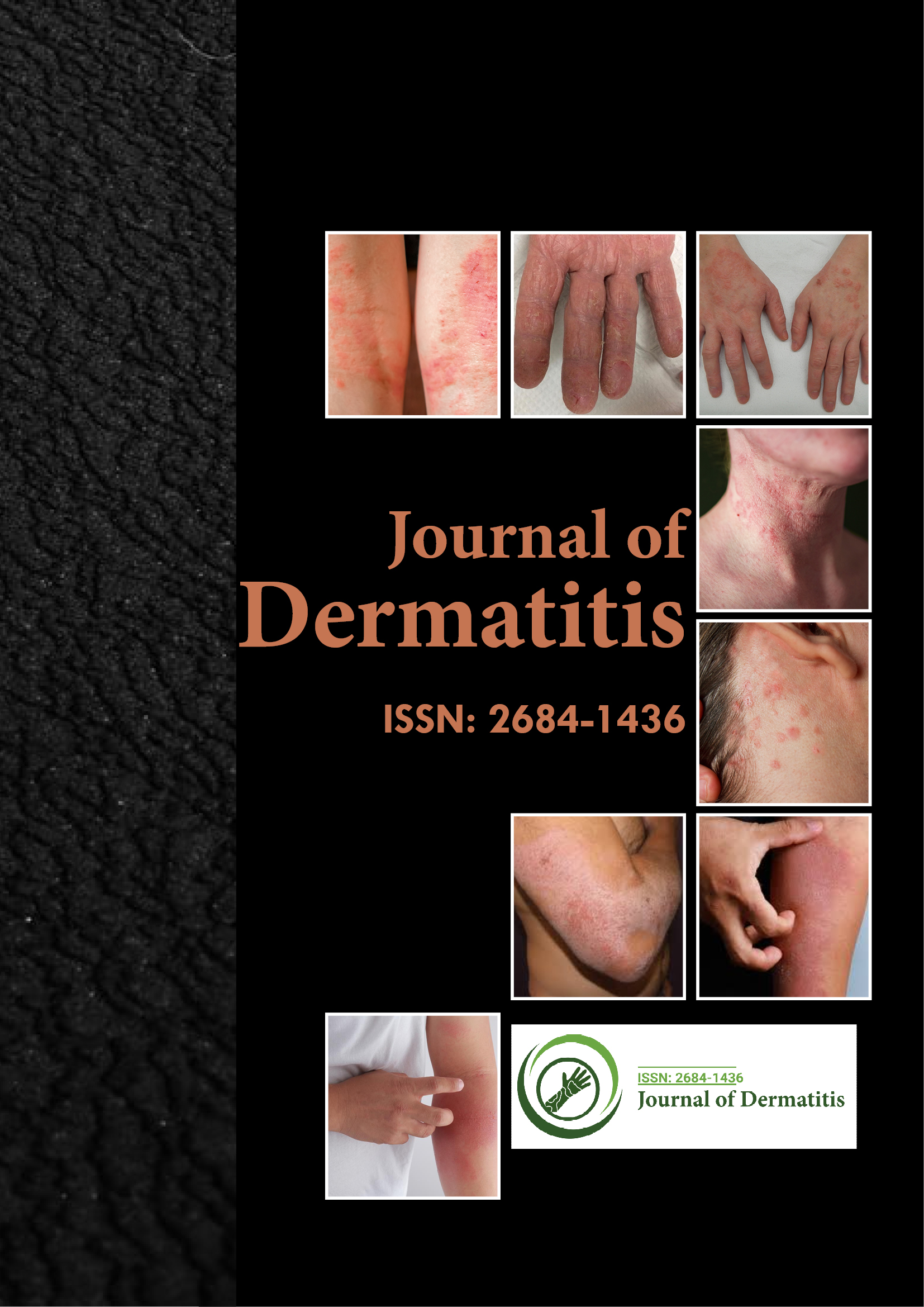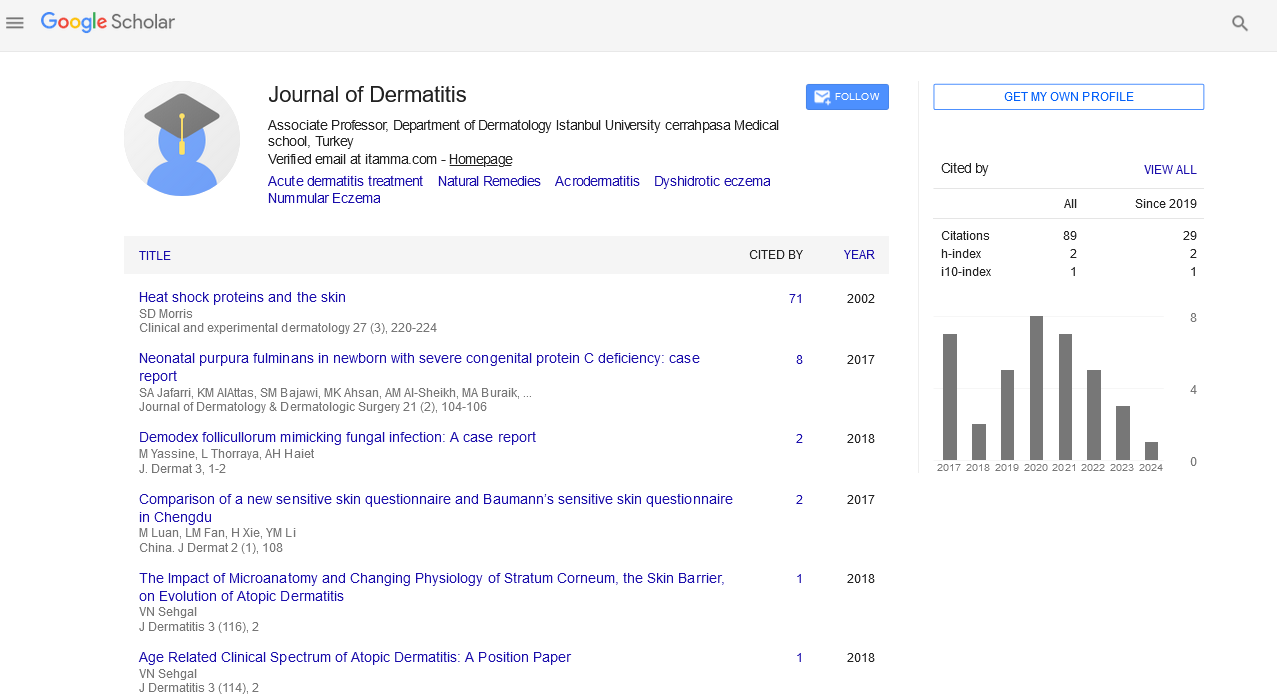Indexed In
- RefSeek
- Hamdard University
- EBSCO A-Z
- Euro Pub
- Google Scholar
Useful Links
Share This Page
Journal Flyer

Open Access Journals
- Agri and Aquaculture
- Biochemistry
- Bioinformatics & Systems Biology
- Business & Management
- Chemistry
- Clinical Sciences
- Engineering
- Food & Nutrition
- General Science
- Genetics & Molecular Biology
- Immunology & Microbiology
- Medical Sciences
- Neuroscience & Psychology
- Nursing & Health Care
- Pharmaceutical Sciences
Commentary - (2024) Volume 9, Issue 4
Managing Seborrheic Dermatitis in the Elderly: A Comprehensive Approach
Tariq Hassan*Received: 29-Nov-2024, Manuscript No. JOD-24-28253; Editor assigned: 02-Dec-2024, Pre QC No. JOD-24-28253 (PQ); Reviewed: 16-Dec-2024, QC No. JOD-24-28253; Revised: 23-Dec-2024, Manuscript No. JOD-24-28253 (R); Published: 30-Dec-2024, DOI: 10.35248/2684-1436.24.9.251
Description
Seborrheic Dermatitis (SD) is a common inflammatory skin condition that predominantly affects the scalp, face and other sebaceous gland-rich areas of the body. While it can affect individuals across all age groups, its prevalence and severity tend to increase in older adults. The condition often presents as erythematous patches with overlying greasy scales and may be accompanied by itching. Understanding the pathogenesis of seborrheic dermatitis in older adults is essential for effective management, as this population may present with unique risk factors and challenges that impact both diagnosis and treatment.
The exact pathogenesis of seborrheic dermatitis remains unclear, but several key factors contribute to its development. The overproduction of sebum, the presence of a specific strain of Malassezia yeast and an inflammatory immune response are all implicated in the disease. Sebum, which is produced by sebaceous glands, provides an ideal environment for the growth of Malassezia, a lipophilic yeast that is a normal part of the skin’s microbiota. In individuals with seborrheic dermatitis, Malassezia becomes overabundant, leading to an inflammatory response in the skin, which results in the characteristic erythema, scaling and itching.
In older adults, several factors can exacerbate seborrheic dermatitis or contribute to its development. Age-related changes in the skin, including a reduction in sebum production, impaired skin barrier function and decreased immune response, may alter the way the body responds to Malassezia colonization. Additionally, chronic conditions common in older adults, such as Parkinson’s disease, cardiovascular diseases and neurological disorders, are associated with a higher prevalence of seborrheic dermatitis. Medications often used in this population, such as antipsychotics, anti-seizure drugs and immunosuppressive therapies, can also increase the risk or worsen the severity of SD. Furthermore, the use of skin-care products that are harsh or drying can impair the skin’s barrier function, exacerbating the condition.
Seborrheic dermatitis is most commonly seen on areas rich in sebaceous glands, including the scalp, eyebrows, nasolabial folds, ears and chest. In older adults, SD often manifests on the scalp and face, sometimes extending to the ears and neck. The erythematous patches may have a greasy or oily appearance due to the excessive sebum production and in more severe cases, the condition may lead to thick, crusted plaques. While SD is not generally associated with significant complications, it can cause distress due to its cosmetic impact and the discomfort caused by itching. Moreover, the presence of SD in older adults is often linked to other comorbid conditions, adding a layer of complexity to the management and treatment of the disease.
The diagnosis of seborrheic dermatitis in older adults is primarily clinical, based on the characteristic appearance of the lesions and the typical distribution of the rash. A detailed patient history is essential to differentiate SD from other dermatologic conditions that can present with similar symptoms, such as psoriasis, eczema, or fungal infections. In some cases, a skin scraping may be performed to rule out other infections, particularly fungal infections, which can resemble seborrheic dermatitis. Patch testing is not typically required, as the condition is not an allergic reaction but an inflammatory response.
Once diagnosed, managing seborrheic dermatitis in older adults requires a careful approach that takes into account the patient's age, comorbidities and potential interactions with other treatments. The goal of treatment is to reduce inflammation, control the overgrowth of Malassezia and improve the appearance of affected skin.
In conclusion, seborrheic dermatitis is a common and chronic inflammatory skin condition that can significantly impact older adults. The pathogenesis of SD in this population involves a complex exchange of age-related skin changes, basic health conditions and medication use. While effective treatment options are available, managing SD in older adults requires a personalized approach that accounts for their unique needs, comorbidities and potential treatment complications. By combining topical therapies, skin-care strategies and careful management of comorbidities, healthcare providers can help improve the quality of life for older adults living with seborrheic dermatitis.
Citation: Hassan T (2024). Managing Seborrheic Dermatitis in the Elderly: A Comprehensive Approach. J Dermatitis. 9:251.
Copyright: © 2024 Hassan T. This is an open access article distributed under the terms of the Creative Commons Attribution License, which permits unrestricted use, distribution, and reproduction in any medium, provided the original author and source are credited.

